Climate Change May Force Millions Of Americans To Move Inland
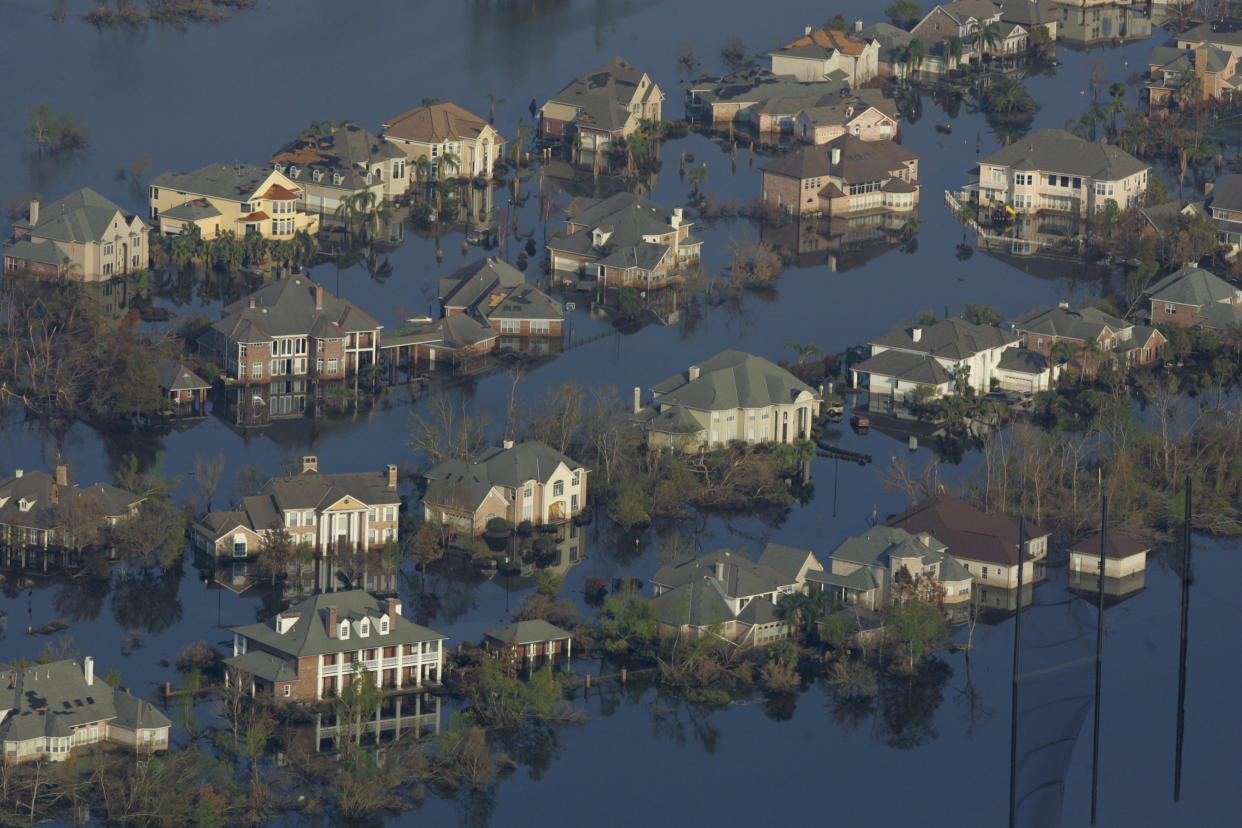
In low-lying island nations like Tuvalu and the Maldives, the term “climate migrant” is all too familiar. Rising sea levels have already forced some Pacific Ocean communities to flee from their homes and there are fears that several whole islands will be underwater in just a few decades.
But it’s not just island dwellers who need to worry about climate-related migration. As coastal areas are deluged over this century, millions of mainland Americans could be forced to flee inland, where they may overwhelm already crowded cities, according to new research from the University of Georgia.
“We typically think about sea-level rise as a coastal issue, but if people are forced to move because their houses become inundated, the migration could affect many landlocked communities as well,” said Mathew Hauer, the University of Georgia demographer who wrote the paper.
Using migration data from the Internal Revenue Service and climate migration models, Hauer concluded that a 6-foot increase in sea levels would cause every U.S. state to experience climate-related migration by 2100. Scientists are predicting a 6-foot global sea-level rise by the end of the century if greenhouse gas emissions are left unchecked.
In a study last year, Hauer had estimated that a 6-foot rise in regional sea levels would put 13 million people in more than 300 U.S. coastal counties at risk.
The new report, published in the journal Nature, finds that nine states could see population declines as rising waters force people to flee. Florida would be worst off with millions of people leaving the state.
Other states would be taking in climate migrants. Texas could absorb as many as 2.5 million internal migrants.
Several metropolitan centers, in particular, could see significant population boosts. Houston; Austin, Texas; Orlando, Florida; and Atlanta could receive more than 250,000 net migrants each, the report said. Other popular cities for climate migrants would likely include Phoenix and Las Vegas.
The incoming human flood might spell trouble for already packed cities, said Hauer. “Some of the anticipated landlocked destinations, such as Las Vegas, Atlanta and Riverside, California, already struggle with water management or growth management challenges,” he said.
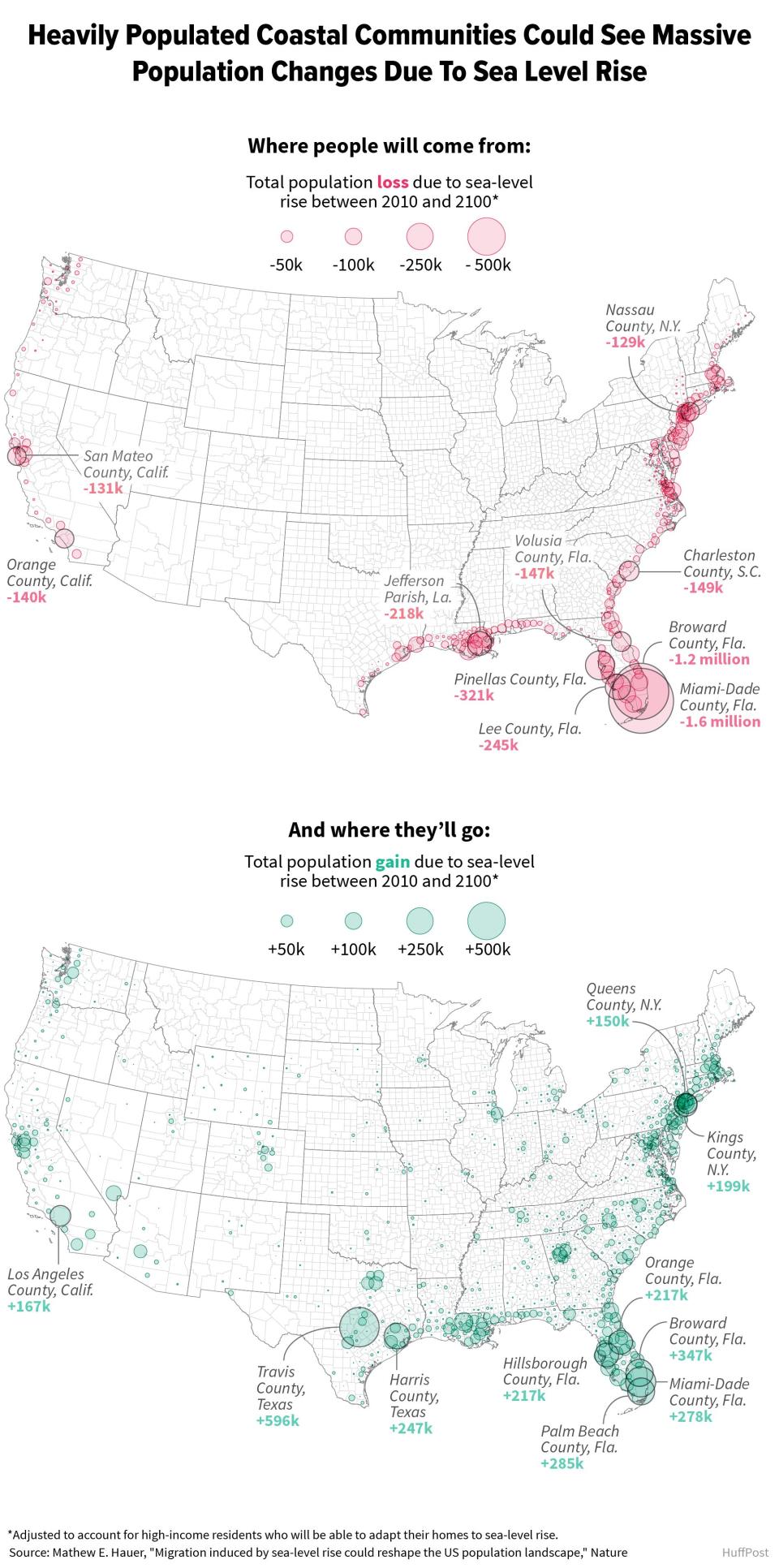
Threatened coastal communities and areas that could face an influx of new residents should start preparing immediately for these future risks, Hauer told HuffPost.
“For many areas, incorporating climate change scenarios into their long-range strategic plans is a really good start. This could include transportation infrastructure, affordable housing options, etc.,” he said.
Commenting on Hauer’s report in Nature, Jeroen Aerts, director of the Institute for Environmental Studies in the Netherlands, noted some potential weaknesses in the predictions: People may not, for instance, follow past immigration patterns when they are forced to migrate for climate reasons. Nonetheless, he said Hauer’s study is part of an important conversation about global warming’s impact on coastal communities.
“There is much we still do not know about how climate change will influence migration,” Aerts said.
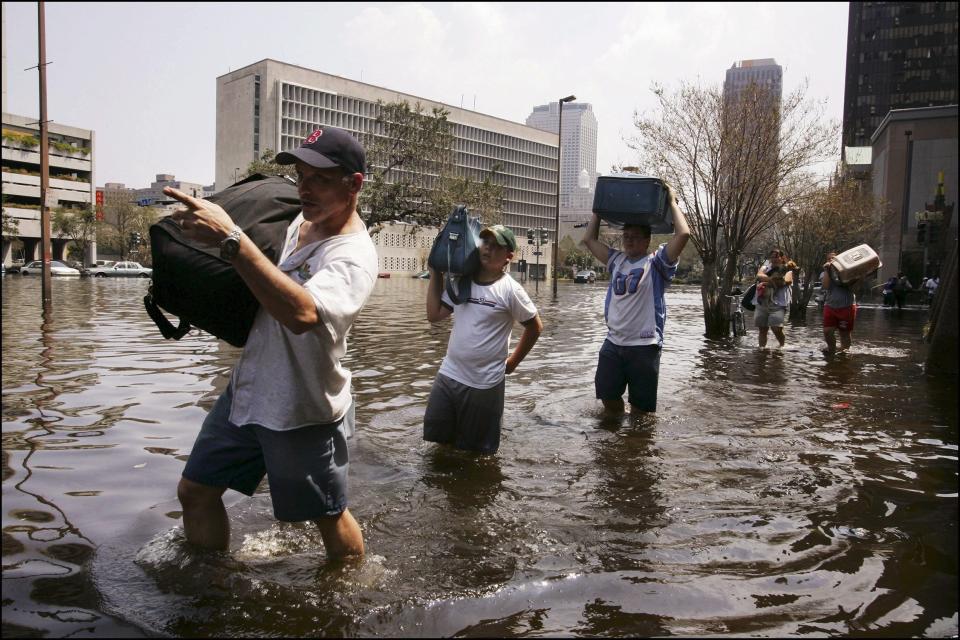
Hauer’s scenario assumes a 6-foot rise in sea levels by 2100. But new research suggests that the outlook might be even grimmer for America’s coastal residents.
Earlier this year, the National Oceanic and Atmospheric Administration upped its worst-case scenario for global sea-level rise to 8.2 feet by the year 2100 — an increase of about 1.5 feet from its last worst-case estimate issued in 2012. In a technical report published in January, the NOAA warned that the U.S. would be especially hard-hit in this extreme projection. Sea-level rise could actually reach up to 10 to 12 feet for all coastal U.S. states except Alaska.
Many major cities, including Boston, Miami, New York and Seattle, would be almost completely submerged in this scenario. Cape Canaveral and the Jefferson Memorial would be underwater, as would the San Francisco International Airport and President Donald Trump’s home away from home, Mar-a-Lago.
News site Climate Central has created images showing what could happen to the Palm Beach, Florida, club and other U.S. cities and landmarks in this extreme scenario. Scroll down for more.
NOAA’s extreme sea-level projection is unlikely but “it is possible,” William Sweet, lead author of the January report, told AFP. Several other recent studies have supported the notion that global sea-level rise by century’s end may be much worse than is currently expected.
There’s evidence that the massive ice sheets of Antarctica and Greenland may not be as stable as once thought and could start melting at a rapid rate if greenhouse gas emissions are not curbed. This ice melt could trigger a “’tectonic shift’ in expectations for the speed and severity of the sea level problem,” Ben Strauss, director of the program on sea level rise at Climate Central, told The Washington Post last year.
A study published in April by the U.S. Geological Survey also found that sea floor erosion, following the degradation of coral reefs, may further boost sea-level increases around the United States and elsewhere. Coral reefs, USGS researcher Kimberly Yates explained, play a critical role in protecting coastal areas from waves, storms and resulting seafloor erosion. “Coral reefs and shallow seafloor create a natural barrier against those coastal hazards,” Yates told HuffPost.
But reefs worldwide are collapsing from the damage of human activity and climate change. “As those reefs and the seafloor erode away and water depth gets deeper, large waves can move closer to ― or even hit ― the shore before they break up, where they can cause more erosion and damage along the coast,” Yates said. “This creates a cascading effect ... loss of coral reefs and seafloor increases water depth, which allows bigger waves to reach coastal areas, which causes more erosion both of the seafloor and along the coastline.”
In their research, Yates and her team found significant seafloor erosion in five large coral reef tracts near Florida and Hawaii and in the Caribbean. The erosion has caused water depths in some of these areas to increase to levels that were not predicted to occur until the end of the century, said Yates.
“At current rates, by 2100, the combination of sea-level rise and seafloor erosion could increase water depths by two to eight times more than what is predicted from sea-level rise alone,” she said.
Love HuffPost? Become a founding member of HuffPost Plus today.
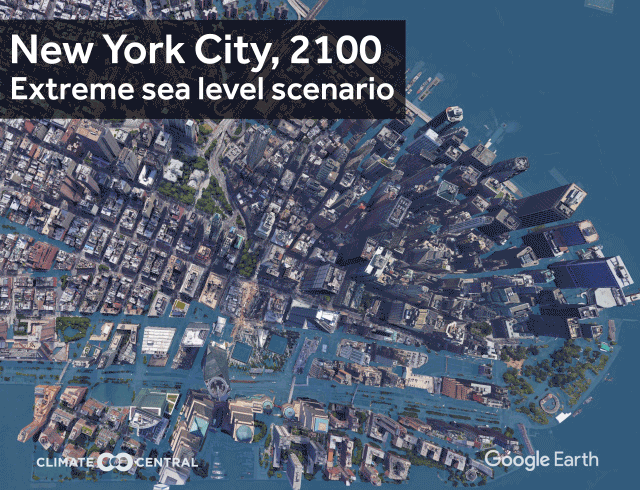
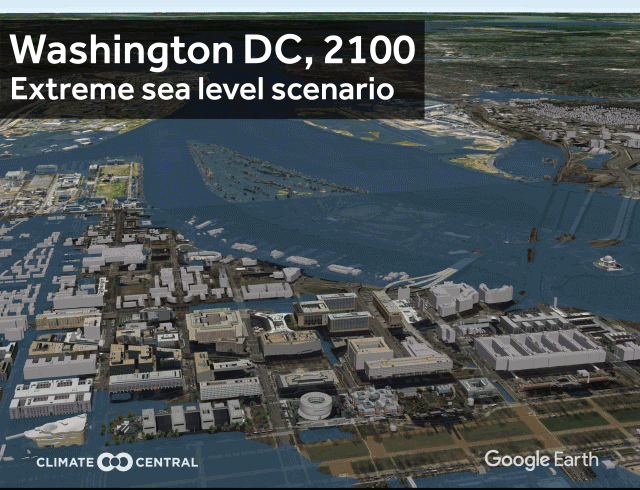
Experts say that if the world doesn’t act to significantly reduce greenhouse gas emissions, the probability of these extreme scenarios goes up and up.
If we want even a chance to save our coastal cities, Strauss of Climate Central told The Washington Post, we need to be “doing even better” than the landmark Paris climate agreement.
In the U.S., however, President Trump, who has repeatedly called global warming a “hoax,” has been busy trying to roll back rules limiting emissions. His commitment to the Paris agreement remains up in the air.
Related Stories
'Significant' New Rift Could Sever Massive Iceberg From Antarctica
Greenland's Vast Ice Sheet Is Way Less Stable Than We Thought, And That's Bad News For The World
Antarctica Is Undergoing An Extraordinary Melt
Greenland's Coastal Ice Caps Have Melted Past The Point Of No Return
100 Days Of Trashing The Planet... And How YOU Can Stop It
What You Can Do Right Now To Stop Donald Trump's Dangerous Climate Agenda
An Up-Close Look At A Delaware-Sized Iceberg About To Break From Antarctica
Also on HuffPost
Strengthen city, county and state climate efforts
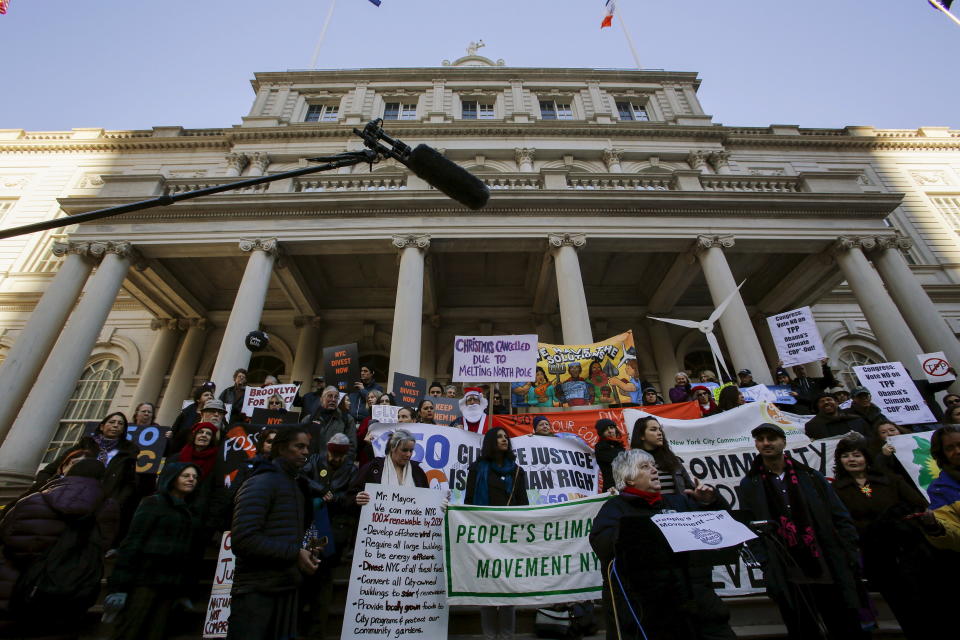
“The ominous signals coming out of D.C. point to even more work needed at the city and state level,” said Kate Kiely, national media deputy director at the Natural Resources Defense Council. In November, the NRDC announced partnerships with 20 cities across the country from St. Paul, Minnesota, to Houston, Texas, to make strides in renewable energy.
According to Brune, cities could have an especially big influence in the climate change fight. “We should be pushing cities to go 100 percent clean energy and to reject natural gas and coal and other fossil fuels,” he said. “A majority of people now live in cities, so this could have a dramatic impact.”
In the U.S., at least 20 cities have made commitments to rely completely on clean energy.
“People should organize and get their own cities to move forward,” Brune said.
Contact your mayor, city council, or county or state representative and get them to set a timeline to stop using fossil fuels.
Push companies and institutions to divest from fossil fuels
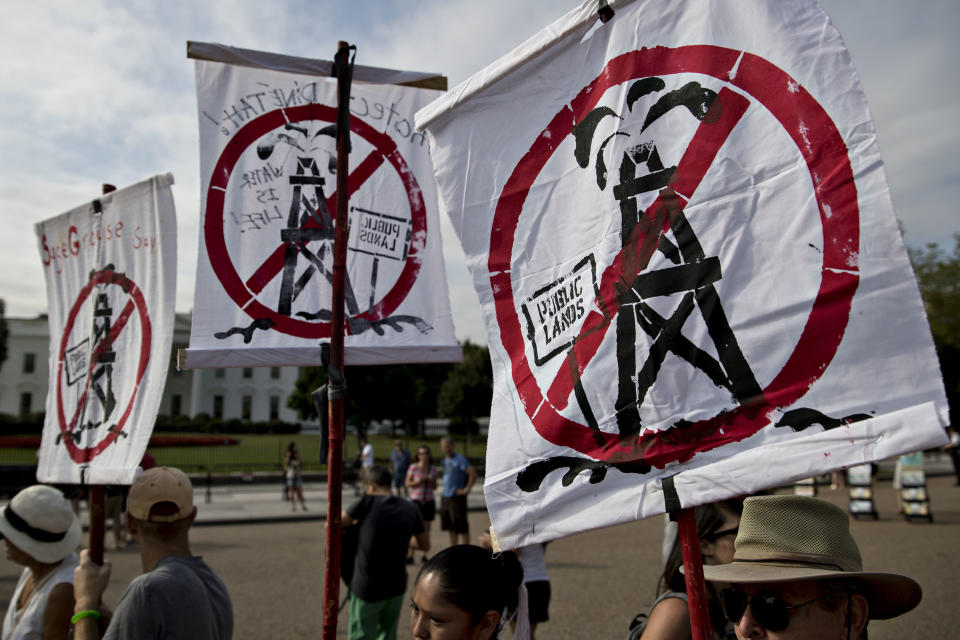
As of December, more than 640 institutions worldwide, including several universities, churches and for-profit companies and banks, have pledged to divest from their fossil fuel investments. According to Go Fossil Free, a 350.org campaign, the commitments amount to more than $3.4 trillion.
Consumers should petition companies to ditch their fossil fuel investments, and students should urge their schools and colleges to do the same.
“As we wrap up the hottest year in history, we know that investments in the fossil fuel industry fund these climate impacts. That’s why it’s more critical than ever that we push our institutions to divest from the fossil fuel companies that are knowingly perpetuating the climate crisis,” Lindsay Meiman, U.S. communications coordinator for 350.org, told HuffPost.
Want to push a company, school or place of worship to divest from fossil fuels? 350.org has a list of resources to help you start a campaign. Or find an existing one to get involved in.
Put your money where your mouth is

“Your ATM card or checking account or your mortgage, these should not be financed by companies that are taking your checking fees or other payments to subsidize the Dakota Access Pipeline or finance drilling offshore. Make sure your money aligns with your values,” Brune said.
In September, Amalgamated Bank became the first North American bank to commit to divest 100 percent from fossil fuels. Aspiration has bank accounts that are fossil fuel-free, and Beneficial State Bank has credit cards that don’t invest in fossil fuels.
Anthony Hobley, CEO of the Carbon Tracker Initiative, said consumers should also ensure that their pensions, 401(k) or other retirement savings accounts are similarly not underwriting fossil fuel companies.
“A lot of pressure can be made through the financial industry,” Hobley said from London. “Ordinary people who hold pensions can put pressure on companies through their pensions. Put pressure on the people who manage your money and that’s one way to keep pressure on those companies too.”
The financial services companies that manage retirement accounts “aren’t used to getting many letters from the people whose money they manage,” Hobley added. “It wouldn’t take much of an organized effort for them to take notice.”
Are your investments supporting fossil fuels? FossilFreeFunds.org is a web tool that allows people to check whether their individual investments or employer-provided 401(k) is supporting coal companies, oil and gas producers, and fossil-fired utilities.
Making a "financial case" for clean energy

With new clean energy technologies getting more efficient and cheaper than fossil fuels, a transition to renewables is “inevitable,” said Hobley. It’s just a matter of time.
“Trump can no more stop this transition than a previous U.S. president could’ve stopped the transition from steam locomotives to the automobile or the typewriter to the computer. The technological genie is already out of the bag,” he said. “It’s not a case of ‘if,’ but ‘when.’ But the ‘when’ is important because of the 2 degrees budget, and that’s where a lack of political leadership or resistance can have a real impact.”
Clear political leadership from both the U.S. and China could mean a "smoother" and faster transition to clean energy. A lack thereof, however, could “make it easier for big oil and gas companies to stay in denial” — and that “would be to their detriment,” Hobley said. “It would mean pouring more money, billions or trillions of dollars, into fossil fuel assets that we simply don’t need.”
Trump now has the opportunity to make the United States a leader in clean energy.
“These are complicated and highly technical products,” Hobley said. “With an educated and skilled workforce, these are the kinds of things that should be manufactured in the U.S.”
Creating new jobs was a central part of Trump’s election platform. Maybe someone should remind him that the clean energy industry creates more jobs per unit of energy than coal and natural gas. In 2015, the number of U.S. jobs in solar energy overtook those in oil and natural gas extraction for the very first time.
A 2015 report by NextGen Climate America found that a transition to clean energy would add a million jobs by 2030 and up to 2 million jobs by 2050, while increasing the nation's gross domestic product by $290 billion and boosting household income.
We should be citing such figures and urging utility companies and public utility commissions to embrace clean energy. (Public utility commissions regularly hold hearings that are open to the public. Attend them, and voice your thoughts!)
Speak out!
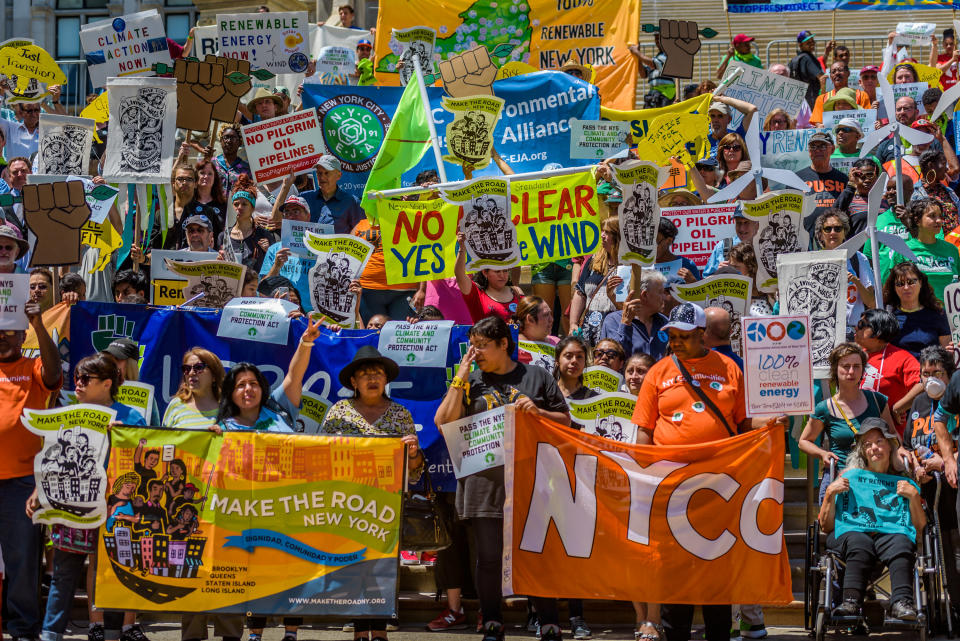
“Talk to your friends and family, and make sure your representatives are making good decisions,” Aliya Haq, deputy director of NRDC’s Clean Power Plan Initiative, wrote in a blog post. “The main reason elected officials do anything difficult is because their constituents make them.”
In the coming months and years, “there will be mass mobilizations that folks should join to push back against Trump’s regressive policies and hateful rhetoric,” said 350.org’s Meiman. “Folks can engage online by joining online actions, signing petitions and contributing their voice on social media to push back on Trump’s agenda.”
You can also participate in protests in your area or join and support local nonprofits in their fight against climate change.
Reduce your own carbon footprint

“Building heating and cooling are among the biggest uses of energy,” said NRDC’s Haq. Make your home more energy-efficient by sealing drafts and ensuring your home is adequately insulated and ventilated too.
Also consider changing your diet. “Cut down on meat consumption or even eliminate it from your diet completely,” Brune said. “I do think that people can have a powerful impact on the environment just by eating less meat.”
It takes 14 times as much biologically productive land to produce 1 ton of beef as it takes to produce 1 ton of grain, according to the Global Footprint Network.
Global livestock is also responsible for 14.5 percent of all anthropogenic carbon emissions, data from the United Nations' Food and Agriculture Organization shows.
Driving a fuel-efficient vehicle is another way to reduce your carbon footprint. You can also take steps to be more fuel efficient when you're on the road, no matter what car you drive.
Support environmental journalism

Over the next four years, Trump needs to be held accountable, and the press must make climate change a central issue in his presidency.
The Society of Environmental Journalists, a nonprofit membership organization supporting environmental journalists in the U.S. and around the world, aims to “improve the quality, accuracy and visibility of reporting on the environment.” You can also support nonprofit environmental news outlets such as Inside Climate, Grist and High Country News.
This article originally appeared on HuffPost.

